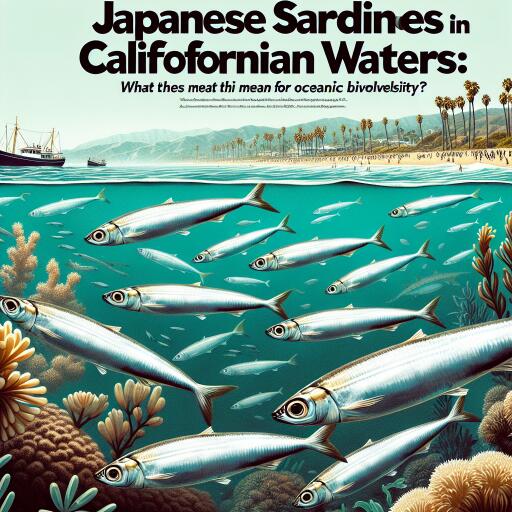
Japanese Sardines Discovered in Californian Waters: What Does This Mean for Oceanic Biodiversity?
The scientific community was taken by surprise with a new discovery. Japanese sardines, previously confined to waters near Asia, have been identified along the West Coast of the United States. Genetic analysis of sardine samples collected during recent surveys revealed this unexpected presence, marking the first documentation of such species in the region. This discovery sheds light on significant shifts in oceanic ecosystems prompted by changing climatic conditions.
The recent research, published in Molecular Ecology, attributes the sardines’ unexpected presence to a shift in ocean conditions, notably temperature increases creating a novel “migration corridor.” Ocean warming, a consequence of climate change, is progressively transforming marine habitats worldwide. The incidence of marine heatwaves, characterized by prolonged periods of elevated sea temperatures, has become more frequent and severe, reshaping traditional ecosystems. These heatwaves potentially facilitate new migration paths by providing conducive conditions for species like sardines to venture into new territories.
With the North Pacific experiencing substantial warming over the past decade, including notorious marine heatwaves such as the one dubbed “the Blob” between 2013 and 2015, traditional patterns in the California Current have been disrupted. This major ocean current is crucial for nutrient cycling and distribution of marine species along the West Coast. The warming trend likely created favourable conditions for the Japanese sardines to migrate along this current from their native habitat near Asia.
The pressing question now is whether these Japanese sardines will establish a permanent presence in North American waters. This possibility depends on several factors, including their adaptability to the environment provided by the California Current. This challenges them to find suitable spawning territories and ample food resources, ensuring their long-term survival.
Another determining factor is the ongoing nature of conducive ocean conditions. Continued occurrences of marine heatwaves and sustained warming could keep the migration corridor open, increasing the likelihood that Japanese sardines might settle permanently.
If they do establish a long-term presence, the ecological implications could be profound. The introduction of a new sardine species might upset the established balance within the California Current ecosystem. This could either elevate the overall availability of prey or spark competition with the native Pacific sardines.
One pertinent question is the potential for hybridization between Pacific and Japanese sardines. Despite being closely related species that diverged around 200,000 to 300,000 years ago, structural genomic variations might inhibit interbreeding and gene flow. Efforts are underway to develop DNA assessments to identify potential hybrids in the future.
Furthermore, the emergence of this new migratory path for sardines could have broader implications for other marine species. As sardines serve as indicator species, revealing shifting ocean temperatures, this evolving habitat trajectory might offer similar dispersion opportunities for other temperate species previously confined to specific areas within the North Pacific. Monitoring long-term ecological trends is crucial to establishing baseline data, allowing for detection and understanding of such significant changes.
The significance of continuous monitoring efforts cannot be overstated in light of these developments. Long-term initiatives, such as the California Current Ecosystem Survey conducted by NOAA’s Southwest Fishery Science Center, are invaluable tools. They help in the identification of baseline shifts and novel events like this migration, offering crucial insights into understanding and adapting to broader ecological changes.
As these oceanic shifts continue to unfold, the discovery of Japanese sardines in Californian waters serves as a critical reminder of the dynamic nature of marine biodiversity and the global influence of climate change.





Leave a Reply